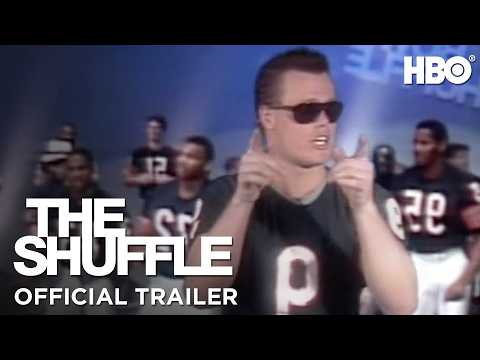HBO revisits the Chicago Bears’ ‘Super Bowl Shuffle’ 40 years later
The Chicago Bears didn’t want to seem cocky.
They didn’t want to jinx themselves.
They certainly didn’t want to provide opponents with bulletin board fodder during their attempt to bring a Super Bowl championship to their home city after the 1985 season.
As a large group of players from that team — billed as the Chicago Bears Shufflin’ Crew — said in the lyrics to one of the most unlikely hit songs and music videos of the 1980s: “We’re not here to start no trouble. We’re just here to do ‘The Super Bowl Shuffle.’”
All of those thoughts weighed on the minds of the 30 or so players who recorded “The Super Bowl Shuffle” four decades ago this month, several weeks before the NFL regular season even ended.
“If we don’t go to the Super Bowl, we’re gonna be the biggest idiots ever,” former Bears linebacker and Pro Football Hall of Famer Mike Singletary says in “The Shuffle,” an NFL Films production presented by HBO Documentary Films. “We gotta win this thing, man.’”
Singletary is one of several of people who share their thoughts and memories about their participation in what has become a beloved relic during the 40-minute documentary that premieres Tuesday at 9 p.m. PST on HBO and streaming on HBO Max. Director Jeff Cameron told The Times that it’s no coincidence that “The Shuffle” is dropping during the 40th anniversary season of the Bears’ only Super Bowl title.

“Outside of some print media or some articles, no one had really chronicled the entire genesis, development and production of ‘The Super Bowl Shuffle,’ which is so intertwined with that team,“ Cameron said.
The song was the brainchild of Chicago businessman Dick Meyer, who had formed Red Label Records the previous year. With the Bears off to a strong start to the 1985 season, Meyer thought a hip-hop record featuring many of the already beloved personalities from that team might have some success in Chicago.
Many players agreed to participate after learning that part of the proceeds were going toward the Chicago Community Trust. “We’re not doin’ this because we’re greedy,” running back Walter Payton rapped during his verse, “the Bears are doin’ it to feed the needy.”
Other featured Bears players included Singletary, Gary Fencik, Willie Gault, Otis Wilson, Steve Fuller, Mike Richardson, Richard Dent, William “Refrigerator” Perry and Jim McMahon.
The vocal tracks were recorded on Nov. 21, 1985. The Bears were 11-0 at the time, coming off a 44-0 rout of the Dallas Cowboys. They continued to roll the following weekend with a 36-0 victory against the Atlanta Falcons.
But their run of perfection came to an end Dec. 2, 1985, with an ugly 38-24 loss to the Dolphins in Miami on “Monday Night Football.” It just so happened that the music video shoot for “The Super Bowl Shuffle” was scheduled for the next morning in Chicago.
Suddenly, Gault said in the documentary, “Guys don’t want to do the video.”
Two of the team’s biggest stars, Payton and McMahon, didn’t show up. They were added into the video after shooting their parts one day after practice.
“It was pretty audacious of us to talk about going to the Super Bowl, winning it, you know?” McMahon said in the documentary. “We still got games to play, and we just lost.”

Chicago Bears players Mike Singletary (left) and Gary Fencik take part in the filming of ‘The Super Bowl Shuffle’ music video Dec. 3, 1985, at the Park West in Chicago.
(Paul Natkin / HBO / Getty Images)
But the video shoot may have had unexpected benefits for the players who participated.
“If not for ‘The Shuffle,’ they probably don’t even get together” that day, Cameron told The Times. “They probably don’t see each other until Wednesday because they have Tuesdays off after Monday night, and they’re right back in the film room or the practice field. They don’t properly get to just forget about the loss for a second, get together as a group of guys who like playing with each other and just who love each other.”
In behind-the-scenes footage provided to Cameron’s team by Meyer’s widow, Julia Meyer, the players are seen laughing and joking around as they attempt to learn a few dance moves and lip-sync their parts, all with varying degrees of success.
“We bonded in a way that we could never have bonded in any other way,” Singletary said in the documentary. “That was the fun part of working together in a totally different realm. There were guys that were backups teaching guys that were starters. We mixed in a way that we had never had a chance to do before. And it became a rallying point that brought us together, got us refocused. ‘This is what we said we were gonna do, let’s go get it done.’”
The Bears didn’t lose another game on their way to defeating the New England Patriots 46-10 in Super Bowl XX. And “The Super Bowl Shuffle” was a success in its own right, with popularity that extended well beyond Chicago.
The single spent nine weeks on the Billboard Hot 100, peaking at No. 41, and was certified gold by the Recording Industry Assn. of America (500,000 units moved). The music video, released commercially on VHS and Betamax, was certified platinum (one million units moved).
The song was even nominated for a Grammy in the category of “Best R&B Performance by a Duo or a Group with Vocals,” eventually losing to Prince and the Revolution for the song “Kiss.”
“I think it was the perfect marriage of that cast of characters from the top down … and the fact that, outside of the Miami game, of course, they just kept winning,” Cameron said. “And it wasn’t close. I think that certainly helps propel this video, along with the rise of MTV. It was a perfect storm of a pop cultural phenomenon.”
